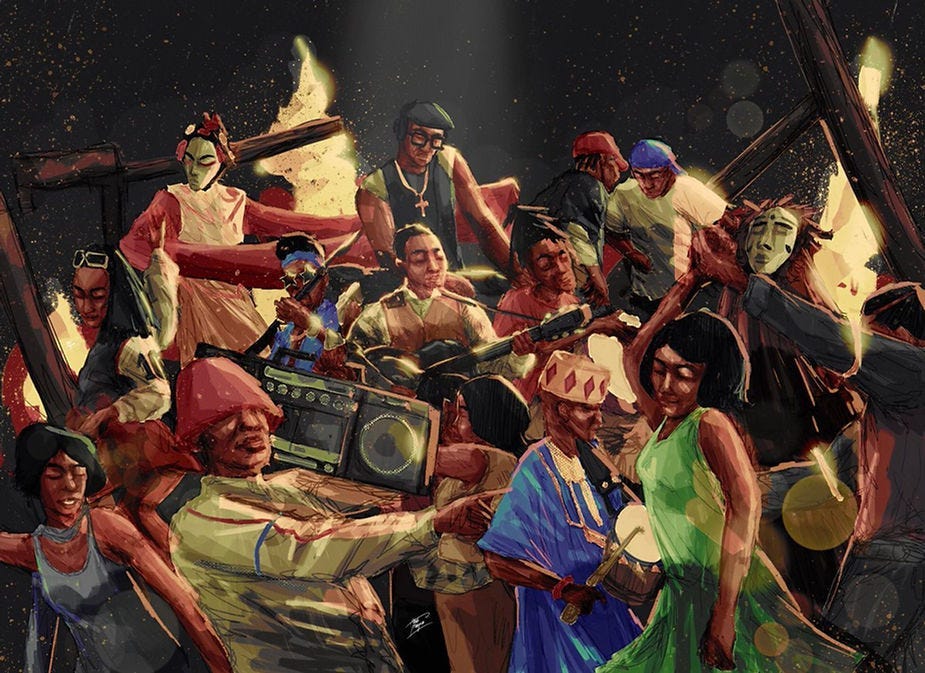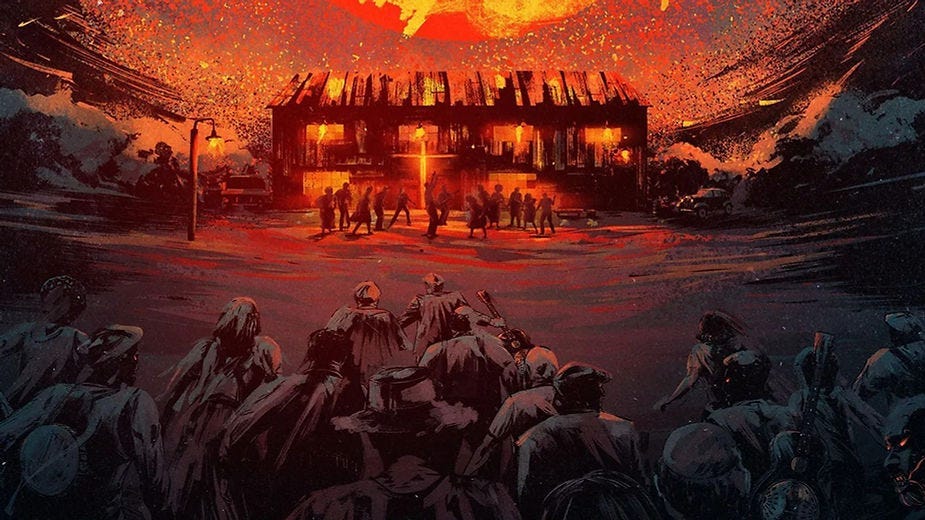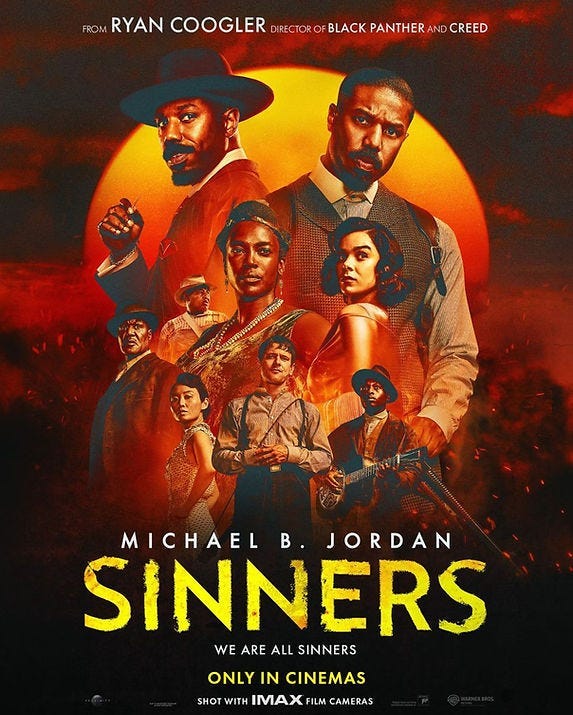Vampire Blues
There’s a lot to love about Ryan Coogler’s Sinners (2025), from its powerful soundtrack to its great female leads, but I’ll leave those discussions to their experts and simply focus in on the film’s use and representation of vampires today.
This is my eighth post about vampires, but have no fear if you haven’t done the reading; I’ll keep my discussion as self-contained as possible. Expect spoilers ahead: watch the film first if you intend to do so!
I think the film uses vampires to explore and accentuate two of its central ideas: the struggle of living between two extremes and the sacred importance of community and fellowship.
Between Two Extremes
Struggling to exist in the grey area, though both sides would have you believe things are entirely black-and-white: once you start looking, this motif appears everywhere in the film.
Hailee Steinfeld’s character Mary is the most obvious example, as a white-passing woman with Black ancestry who nonetheless tries to fit in with both groups. Her struggle is evident through just a few lines at the juke joint: first treated suspiciously and asked to leave due to her appearance, then warned that her life will be at risk if her white community finds out she was there. (Chinese couple Grace and Bo Chow presumably also navigate this grey area to some extent.)
As the preacher’s son, Sammie lives between fearful respect for his father and passion for his music. Smoke and Stack tread the line between moneymaking and community building, and only earned their current wealth by playing rival Italian and Irish factions against each other. The setting is also one where Black Americans have legal freedom but face incredible challenges in securing economic and social liberty; cotton plantations remain a primary employer for them and racism is both rampant and deadly.
Vampires likewise represent a middle ground between life and death, an afterlife between heaven and hell. Symbolically, it should then be no surprise that Sinners’ vampire Remmick presents himself as an alternative to either death at the hands of the Klan or a continued life of struggle:
“I am your way out. This world already left you for dead. Won’t let you build. Won’t let you fellowship. We will do just that. Together. Forever.”
His supposed vision is of a great equalization through undeath, which has sparked a lot of fascinating discussions online about exploitation, cultural erasure and, of course, vampire movie tropes. Ultimately, he wants community of his own creation — and control over Sammie’s gift for empowering it.

Community & Fellowship
I love that this film’s inclusion of the supernatural doesn’t begin and end with vampires. Annie’s Hoodoo and Sammie’s Christianity both play their roles in determining characters’ actions if not directly interceding, and the transcendent power attributed to musicians and storytellers serves as a perfect core for this story about community. (The Choctaw vampire hunters pursuing Remmick at the beginning are also perfect!)
Fellowship through and around (blues) music is deeply important to Black culture, so Ryan Coogler brilliantly centers it in both setting and plot. Sammie’s gift to connect with spirits of past and future is beautifully symbolic of the real role of this music, while also acting as a spiritual beacon to creatures like Remmick who are forever cut off from their own family and community. The image of the warm festivities within and cold loneliness without has never been more fitting.
Annie also demonstrates that Remmick’s vision of community is stunted and false, by choosing true death and reunion with her close spirits over being trapped on the mortal plane. That being said, she also seems to imply that Remmick’s long-overdue death will “free his spirit from this curse” — so perhaps he’ll finally get his deeper wish anyway.

Outro
It’s fascinating and refreshing to see a film of this scale explore vampires in any kind of grey area — though I suppose anyone looks good compared to the Klan. Remmick’s influence over them broken, the mid-credits scene suggests that vampire Stack and Mary have been able to exist on their own terms for the past sixty years — albeit disconnected from the spirits of their loved ones and any ability to see the sun.
These are some relatively under-explored themes in vampire fiction — doubly so on film — so it’s lovely to have them in such a celebrated piece of art. As I’ve written about extensively, vampires offer plenty of interesting ideas beyond simply being monsters lurking in the dark.
That being said, this film certainly did lean into the tropes as well. What did you think of the garlic, stakes and need for invitations? I thought for sure running and/or holy water would come up at the end, but maybe Stack beat that particular weakness to the punch.
Did I miss any key examples or connections? I’d love to learn more about this film and its origins!
Thanks for reading and until next time ❤





